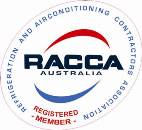Danfoss have released a publication with information, facts and figures, as well as history of CO2 refrigerants.
CO2 Refrigerant for Industrial Refrigeration provides a history of CO2 refrigerants, which go back as far as 1850 and details how CO2 refrigerants were at their peak in the 1920s and early 1930s and that it was the preferred choice for use in the shipping industries due to not being flammable or toxic. However despite their popularity, CO2 refrigerants disappeared from the market when Freon came on the scene and ammonia became the dominant refrigerant choice.
The publication highlights the unique properties of CO2 refrigerants. The unique properties that the publication points out include higher operating temperatures, a narrower range of operating temperatures, triple point at a much higher pressure and critical point at a very low temperature. The publication also points out disadvantage of CO2 and other natural refrigerants such as flammability and limited application.
The publication also highlights facts and figures on the characteristics of CO2, CO2 as a refrigerant, CO2 as a refrigerant in industrial systems, design pressure, efficiency and oil in CO2 systems. It also highlights facts and figures comparing the components of CO2, ammonia & R134 systems, as well as on water in CO2 systems.
The publication also points out the safety issues of CO2 refrigerants. These issues include its odourless, which is a repair issue, as it would not be self alarming if there were leaks and its weight as CO2 is heavier than air, which means it falls to the floor and can cause health and safety issues. These health and safety issues are due to the displacement of oxygen occurring when CO2 falls to the floor, which can cause adverse reactions. The publication details these adverse reactions, which depend on the percentage of CO2 in the air.
The publication also provides details on miscellaneous features to be taken into account when operating CO2 refrigeration systems. These features include safety valves, charging CO2, filter cleaning, trapped liquid, leaks in CO2-NH3 cascade systems and material compatibility.
The publication concludes by pointing out that CO2’s unique features need to be taken into account through the design, installation and operation process and that CO2 is not a replacement for ammonia.
CO2 Refrigerant for Industrial Refrigeration can be found here.
N.B. Danfoss will be publishing a new and updated document on CO2 Refrigerants for Industrial Refrigeration at the end of the year.
Image via Wikipedia.




